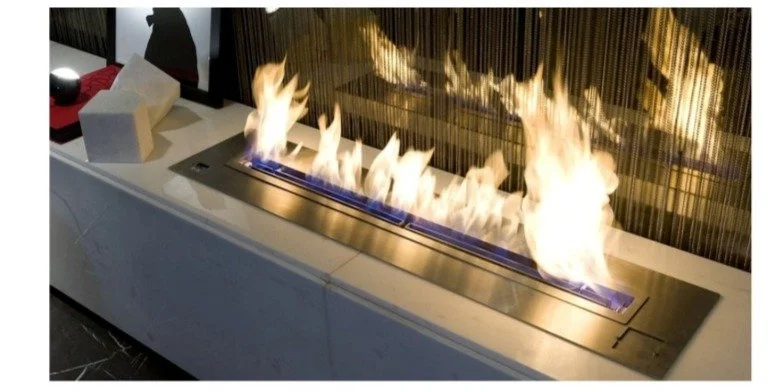Commercial properties in Houston depend on clean air ducts to keep indoor air fresh and HVAC systems working efficiently. Dust, allergens, and debris can collect quickly in the city’s humid climate, which can affect both air quality and energy costs. The best commercial air duct cleaning companies in Houston use trained technicians and professional equipment to remove buildup and help systems run at their best.
This guide highlights five companies that serve businesses across the Houston area. Each one offers specific services for different building needs, from large office spaces to smaller retail locations. By comparing their methods, service options, and scheduling flexibility, businesses can choose the right fit for their property.
Whether the goal is to improve airflow, address allergy concerns, or maintain a healthier workplace, the right cleaning service can make a noticeable difference. The following sections break down what each company offers so decision-makers can hire with confidence.
1. Quality Air Duct Cleaning Houston
Businesses seeking professional HVAC maintenance can turn to Quality Air Duct Cleaning Houston, visit website for full details on available services. The company works with both small and large businesses across the city, focusing on removing dust, debris, and allergens from HVAC systems to maintain cleaner indoor air. Their projects include offices, retail spaces, warehouses, and other commercial properties.
The technicians begin each job by inspecting the system to identify buildup or blockages, allowing them to target problem areas and select the right tools for the task. Using high-powered vacuums and specialized brushes, they clean ductwork thoroughly without causing damage.
Services often include:
The team schedules work around business hours to minimize downtime, with most projects completed in a single day, depending on building size and duct complexity. Upfront pricing guarantees clients know the cost before work begins.
Many businesses report improved airflow and reduced dust after using their services. With proper licensing and insurance, the company offers clients added peace of mind. Their service area covers all major Houston neighborhoods and nearby communities.
2. CityPro Chimney Sweep Houston
CityPro Chimney Sweep Houston focuses on professional chimney cleaning and maintenance for commercial and residential properties. Their work addresses soot buildup, blockages, and structural issues that can affect safety and performance.
The company offers services such as chimney sweeping, cleaning, and repair. Technicians also inspect systems to identify damage or wear before it becomes a larger problem. This approach helps businesses avoid unexpected downtime or costly repairs later.
They serve the greater Houston area as well as nearby communities. This coverage benefits businesses with multiple locations that need consistent service across different sites.
CityPro’s team uses industry-approved tools to remove debris and improve airflow. In addition, they handle masonry repairs, flue relining, and cap installation for better protection against weather and pests.
Many commercial clients value their ability to schedule work during off-hours. This reduces disruption to daily operations and allows facilities to remain open without interruption.
Their focus on chimney systems makes them a specialized option for businesses that require targeted maintenance rather than general HVAC services. This specialization can be helpful for restaurants, hotels, and other facilities with high chimney use.
3. Houston Air Duct Cleaning
Houston’s warm, humid climate often causes dust, pollen, and moisture to collect inside commercial HVAC ducts. Over time, this buildup can affect airflow and indoor air quality in offices, warehouses, and retail spaces.
Professional air duct cleaning services in the city use high-powered vacuums and specialized brushes to remove debris from supply and return ducts. This process helps systems operate more efficiently and can reduce strain on HVAC components.
Technicians usually begin with a full inspection to identify problem areas such as mold growth, heavy dust, or blocked vents. They may also clean vent covers, replace filters, and clear out dryer vents if requested.
Service times vary, but most commercial properties require several hours for a full cleaning. Larger buildings or those with multiple HVAC units may take longer.
Costs often depend on factors such as building size, duct accessibility, and the amount of debris inside the system. Many providers offer free estimates so businesses can plan ahead.
Regular cleaning every 3–5 years is common, although facilities with high foot traffic, pets, or nearby construction may need it more often. This schedule helps maintain cleaner air and steady system performance throughout the year.
4. Express Air Duct Cleaning
Express Air Duct Cleaning serves commercial clients across Houston with a focus on clean and efficient HVAC systems. The company handles dust, debris, and allergen buildup in air ducts to help maintain better indoor air quality for employees and customers.
They use professional-grade equipment to reach deep into ductwork and remove contaminants. This process can improve airflow and may help HVAC systems run more efficiently, which can reduce strain on equipment.
Customers often note the company’s punctual service and clear communication. Feedback highlights technicians who explain the process before starting work, so clients know exactly what to expect.
Express Air Duct Cleaning also offers same-day appointments for businesses that need fast service. This can be useful for offices, retail spaces, or facilities preparing for inspections.
The team works with a variety of commercial properties, including warehouses, medical offices, and hospitality venues. By addressing buildup in ducts, they help reduce dust circulation and create a cleaner work environment.
5. Kilgore Service
Kilgore Service focuses on commercial HVAC and air duct cleaning for businesses in the Houston area. The company also offers electrical and plumbing maintenance, which allows clients to address multiple building needs through one provider.
Their technicians have training to work with complex HVAC systems used in offices, retail spaces, and industrial facilities. They use modern diagnostic tools to identify airflow issues, debris buildup, or equipment faults before starting any cleaning or repair work.
Services include:
Air duct cleaning for commercial properties
HVAC system repair and maintenance
Electrical service repair
Plumbing system upkeep
Businesses often choose Kilgore Service for planned maintenance programs. These programs help reduce the risk of HVAC breakdowns and keep systems operating at consistent efficiency throughout the year.
The team works to complete projects with minimal disruption to daily business operations. This approach is especially important for companies that cannot afford long periods of downtime.
Kilgore Service also provides emergency repair support for unexpected HVAC failures. Their technicians carry the tools and parts needed to address common system problems on the spot, which can shorten repair times and restore service quickly.
Conclusion
Houston businesses benefit from commercial air duct cleaning that uses proper tools and trained staff to address dust, debris, and allergens in HVAC systems.
The top providers in the area offer clear pricing, flexible scheduling, and services suited for different property sizes and system types.
Regular cleaning every few years can help maintain airflow, support energy efficiency, and reduce indoor air pollutants.
By comparing service quality, experience, and equipment, businesses can choose a provider that meets both their budget and maintenance needs.












